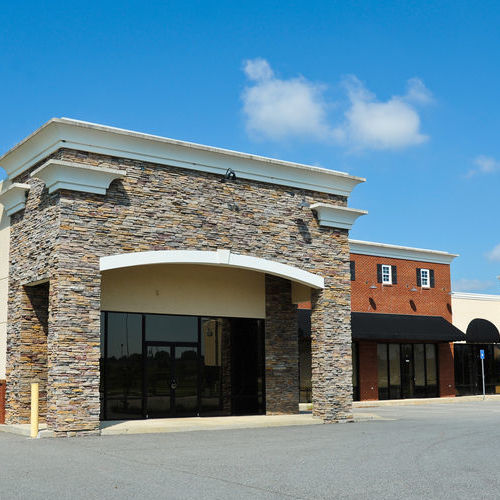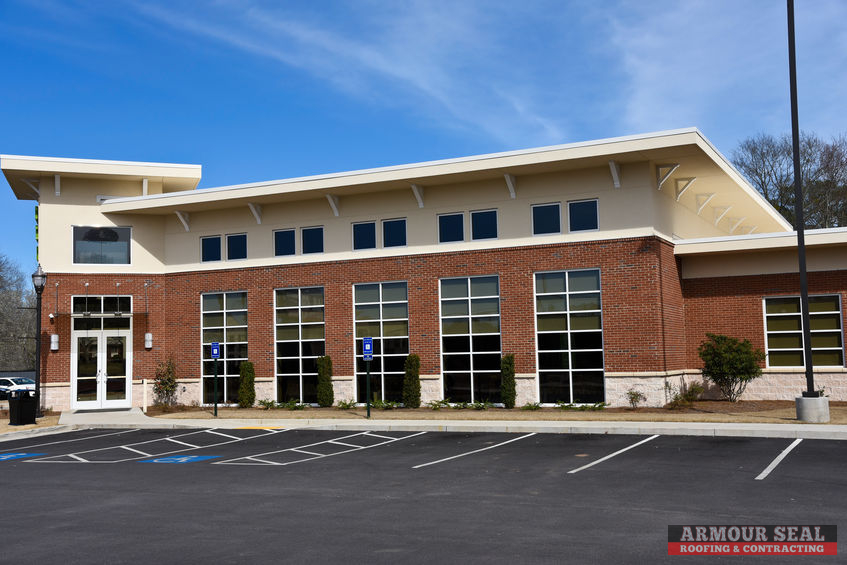
About Commercial Roofs
There are several types of commercial roofing materials, and while they serve the same purpose, they are not all the same. When it comes to commercial roof repair, the importance and urgency are the same though, but how they are repaired may vary. How well a commercial roof repair is done is extremely important, especially with the winters here in the Philadelphia, Pennsylvania area.
How are commercial roofs constructed?
There are different roofing materials and there are different construction variations with commercial roofing, with most being what is referred to as a flat roof. While they appear to be flat to the naked eye, there is a slight slope for drainage purposes. This is a cost-effective way for structures as big as most commercial structures.
With flat roofing, there are 3 categories as follows:
- Traditional membrane: These are the built-up roof, mastic asphalt, or tar & gravel.
- Synthetic membrane: These are the PVC, TPO (thermoplastic olefin), or EPDM (ethylene propylene diene monomer).
- Metal roofing: These are often aluminum, copper, or steel.
What is the most common type of commercial roof?
EPDM (ethylene propylene diene monomer) is probably the most popular commercial roofing material. EPDM commercial roofing is a low-cost, resilient roofing material made of natural gas and oil synthetic rubber. When it comes to commercial roof repairs, it is one of the easiest to work with, although repairs are rare because the elasticity properties make it a tough roofing material that can withstand the constant damaging ultraviolet rays.
What is the best type of commercial roof?
Metal is often considered to be the best for commercial roofing, and because it has a long lifespan, up to 60 years or longer, with little need for commercial roof repairs, makes it a popular choice. The various types of metal give it more appeal for the architectural aspect too, and in areas like Pennsylvania where snow is a big factor to consider in roofing, a snow removal system is possible with any of the following types of metal:
- Aluminum
- Coated or stainless steel
- Copper
- Corrugated galvanized steel
- Tin
- Zinc
A downside to metal commercial roofing is the corrosion factor which can lead to more commercial roof repairs. Today, thanks to technology, protective layers are added now that minimize the need for commercial roof repairs due to moisture, pollution, UV exposure, and overall environmental factors.

What is PVC roofing?
PVC roofing is made from polyvinyl chloride, aka plastic as a single-ply roof. A strong and stable material that is installed by the seams being heat welded or solvent welded, allowing the seams to contract and expand with the building. It is chemical-resistant, water-resistant, and fire-resistant, and holds up to the UV rays without discoloring, all leading to a few commercial roof repairs.
What is the difference between TPO and EPDM?
EPDM, TPO, and PVC are all excellent roofing materials for commercial structures. Each has advantages and benefits; each has disadvantages and possible issues. The important factors to consider when choosing a roofing material are:
- Budget
- Climate
- Lifespan
EPDM is an inexpensive option that comes in 50’ wide sheets, making installation easier and faster, which accounts for its inexpensiveness.
TPO roofing membrane is the less expensive option compared to PVC. It is Energy Star certified as a cool roof that is flexible, and it is impact, function, and tear-resistant as well. It flexes with the building and temperatures and maintains its performance making commercial roof repairs few and far between.
How long should a built-up roof last?
A better roofing material in warmer climates, it will last up to 30 or 40 years. In a colder climate, the life expectancy is around 15 years with routine roof inspections and maintaining any commercial roof repairs as needed.
When do I need to replace my commercial roof?
New commercial roof installation is something you want to make sure is necessary due to the expense and inconvenience. Routine roof inspections are recommended so that any possible commercial roof repair needs can be identified and addressed, prolonging the need for a new roof. Indications when a new roof cannot be delayed any longer are:
- The Age
Age is an important factor in deciding whether it is time for a commercial roof replacement. A commercial roof that is properly installed and has been well-maintained roof can have a lifespan of 30 years, some longer. By the 20th year, it is important to make those roof inspections more frequent, stay on top of commercial roof repairs, and hopefully keep it in place for another 10 years before needing a new roof.
- Leaking
If a commercial roof is leaking, commercial roof repairs should be made immediately. At some point, the leaks may be too close together or too frequent. Having a new roof installed could be cheaper than constant roof repairs.
- Weather Damage
No matter the age of your commercial roof, after a significant weather event, an inspection should be performed to determine if commercial roof repairs are sufficient or if a new roof is needed.
In Closing – The Lifespan Matters
When you put the money into a new commercial roof, you want it to last a lifetime. But, how long does a commercial roof last? In cold climates, as we stated earlier, a built-up roof can last 15 years, 30 in warmer climates. Other commercial roofing systems can have lifespans as follows:
- TPO roofing between 22 and 30 years
- EPDM roofing between 22 and 35 years
- Metal roofing between 30 and 45 years
Armour Seal Exteriors, Roofing, Masonry and Contracting provides professional services with your commercial roof in Philadelphia, PA. Call 267-622-7158 to get started.
